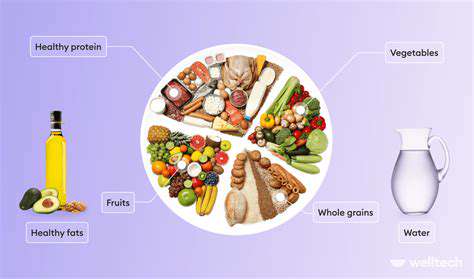Sharing Your Gardening Passion with Other Seniors
- Monthly workshops on specific gardening techniques
- Guest speakers from local nurseries
- Field trips to botanical gardens
Finding a Suitable Location
Location selection requires careful consideration of several practical factors. An ideal spot combines easy accessibility with proper growing conditions. Many successful senior gardening groups utilize:
- Designated plots in community gardens
- Outdoor spaces at senior centers
- Partnered locations at local parks
Essential amenities include nearby restrooms, shaded seating areas, and convenient parking. The space should receive adequate sunlight while offering some protection from harsh weather.
Recruitment and Membership
Building membership requires targeted outreach to potential participants. Personal invitations often prove more effective than general advertisements. Effective recruitment strategies include:
- Presentations at senior community events
- Flyers in doctors' offices and pharmacies
- Word-of-mouth referrals from current members
Introductory meet and greet events allow newcomers to experience the group's atmosphere before committing. Pairing new members with experienced garden buddies helps ease the transition.
Developing a Schedule and Budget
A predictable routine with seasonal variations keeps members engaged throughout the year. Consistent meeting times establish comforting regularity while allowing flexibility for weather-dependent activities. Sample scheduling might include:
| Season | Activities |
|---|---|
| Spring | Seed starting, bed preparation |
| Summer | Plant care, pest management |
| Fall | Harvesting, bulb planting |
| Winter | Planning, indoor gardening |
Financial planning should account for ongoing expenses like soil amendments and tool maintenance while leaving room for special projects. Many groups supplement budgets through plant sales or small membership fees.
Maintaining a Thriving Environment
The group's social dynamics require as much attention as the garden itself. Creating multiple opportunities for member input fosters genuine ownership and commitment. Regular garden chats where participants share successes and challenges help maintain engagement.
Celebratory events like harvest dinners or photo contests recognize members' efforts while strengthening bonds. Displaying before-and-after pictures of garden progress provides visual reminders of collective achievements.

Before embarking on your solo journey, thorough preparation ensures safer travels. Researching destination-specific customs and potential risks allows for informed decision-making during your trip.
Encouraging Collaboration and Knowledge Sharing
Fostering a Community Garden
Community gardens thrive when participants view themselves as collaborators rather than individual plot holders. Shared workdays where members assist each other with major tasks create camaraderie while accomplishing more than solitary efforts.
The informal exchange of gardening wisdom - whether about companion planting or natural pest deterrents - becomes one of the group's most valued aspects. Seasoned gardeners often enjoy mentoring newcomers, creating intergenerational connections.
Sharing Expertise and Techniques
Skill-sharing takes many forms in successful gardening groups. Some implement a gardener of the month program highlighting different members' specialties. Others maintain a communal notebook where participants record:
- Successful plant varieties
- Local growing tips
- Problem-solving innovations
Organizing Workshops and Learning Sessions
Structured educational opportunities complement informal knowledge sharing. Popular workshop topics include:
- Seed saving techniques
- Composting methods
- Container gardening
- Drought-resistant plants
Hands-on demonstrations often work better than lectures for senior learners. Providing take-home reference materials helps reinforce the lessons.
Creating a Platform for Feedback and Discussion
Ongoing communication channels keep members connected between meetings. Many groups use:
- Private social media groups
- Email newsletters
- Bulletin boards at the garden site
These platforms allow members to ask questions, share observations, and arrange informal gardening sessions.
Celebrating Successes and Sharing Stories
Regular recognition of achievements maintains motivation. Some groups create:
- Garden spotlight features in local papers
- Annual award ceremonies
- Photo journals documenting progress
Seasonal potlucks featuring garden-grown ingredients provide delicious opportunities to celebrate together. These gatherings often become highlights of the gardening calendar.











